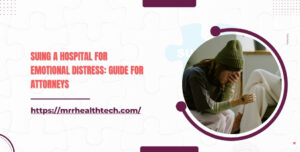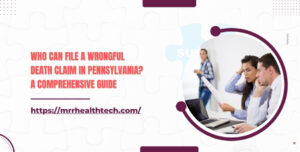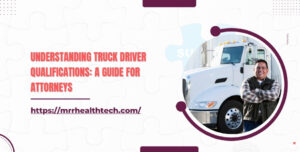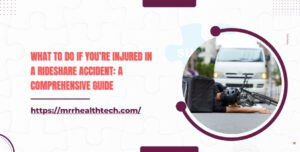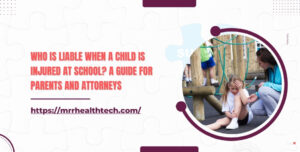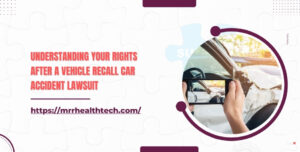
Accidents in aviation can shake and threaten the world by causing huge damages, impacting on lives and legal issues. Knowing who is responsible in these situations is critical for the victims and their families to claim for compensation. This article seeks to cover the multiple sides of liability when it comes to aviation accidents, the damages that can be compensated, and how medical record review services render assistance for attorneys in creating formidable cases.
The Landscape of Aviation Accidents
Overview of Aviation Accidents
- Definition: Aviation accidents cover all events in which injuries or fatalities occur in relation to commercial airline(s) , Private Plane(s) and helicopters.
- Statistics: As stated by the NTSB, more than 1200 general aviation accidents took place in the USA in the year 2022 which shows a need to determine liability.
Common Causes of Aviation Accidents
• Pilot Error: Taking off and landing misjudgements are also among the more commonly cited reasons accidents occur because pilots tend to mess up.
• Mechanical Failures: Errors can stem from defective parts or repairs not being completed correctly.
• Weather Conditions: Flights accidents are often caused by dangerous weather elements such as fog, thunderstorms, hail, turbulence, and high or low temperatures.
Who is Liable in Aviation Accidents?
Determining Liability
Liability in aviation accidents can be complex, involving multiple parties. The following are potential liable parties:
• Pilots: A fault in an aeronautical pilot’s judgment can lead to an accident, in which case, a pilot can be liable.
• Aircraft Owners: Owners ensure that their aircraft undergo regular checks and are also liable for its operational safety.
• Manufacturers: The manufacturer can take the responsibility if there were design or construction errors that furthered the accident.
• Airlines: Deficiencies in management in commercial air transport can be attributable to the airlines.
• Air Traffic Controllers: Most aviation accidents stem from inadequate communication or instructions of air traffic control.
Types of Aviation Accidents
• Commercial Aviation Accidents: Includes airlines that adhere to a flight schedule and are highly regulated.
• General Aviation Accidents: These are more likely to involve privately owned flights and fewer regulations which result in diverse considerations of liability.
• Helicopter Accidents: These can involve special operational and legal complexities.
Recoverable Damages in Aviation Accidents
Types of Damages
Victims of aviation accidents can seek various types of damages, including:
• Economic Damages: Covers medical bills, professional loss, and prospective income.
• Non-Economic Suffering: This includes suffering, emotional suffering, and loss of societal relations.
• Punitive: Awarded in cases of serious negligence or deliberate wrongdoing.
Limitations on Damages
• The Warsaw Convention: This agreement limits the liability of international airlines to approximately $75,000 for damages under claims of international flights unless gross negligence can be shown.
• State Laws: Some states assign different damage caps and liability limits.
The Role of Medical Records Review in Aviation Accident Cases
Importance of Medical Records
Medical records are crucial in establishing the extent of injuries and the impact on the victim’s life. They provide:
• Proof of Injuries: Accounting of injuries during the specific incident in question.
• Treatment History: The medical procedures carried out and the relevant aftercare that must be provided.
• Expert Testimony: Medical professionals will remark on the effects the injures will have in the years following the accident.
How Medical Records Review Supports Attorneys
- Building Strong Cases: A thorough review of medical records helps attorneys establish a clear link between the accident and the injuries sustained.
- Identifying Future Needs: Understanding the long-term medical needs of the victim can help in calculating future damages.
Case Studies
Case Study 1: Commercial Airline Crash
• Overview: The crash resulted in numerous deaths and injuries to many others.
• Challenges: Identifying responsibility to the airline, manufacturer and air traffic control.
• Solutions: An investigation established the cause as poor maintenance which resulted in mechanical failure. Adequate treatment was ensured to survivors and their medical records were analyzed to gauge their injuries.
Case Study 2: Private Plane Accident
• Overview: A private airplane crash left the pilot and some passengers with severe injuries.
• Challenges: The claim that the mechanical failure was the airline’s fault was hotly disputed on the basis of the pilot’s error.
• Solutions: Medical records were analyzed for injuries and treatment given along with supporting documents from other eyewitnesses filed during the crash. Expert’s provided governmental testimony citing mechanical problems as the cause of the accident.
Conclusion
Determining liability in helicopter crashes is always difficult. The problem is further complicated by the fact that many doubts need to be cleared before victims receive justice for such acts. Review of medical records is especially sensitive, but is very helpful in supporting lawyer’s claims to construct solid arguments on behalf of victims.


